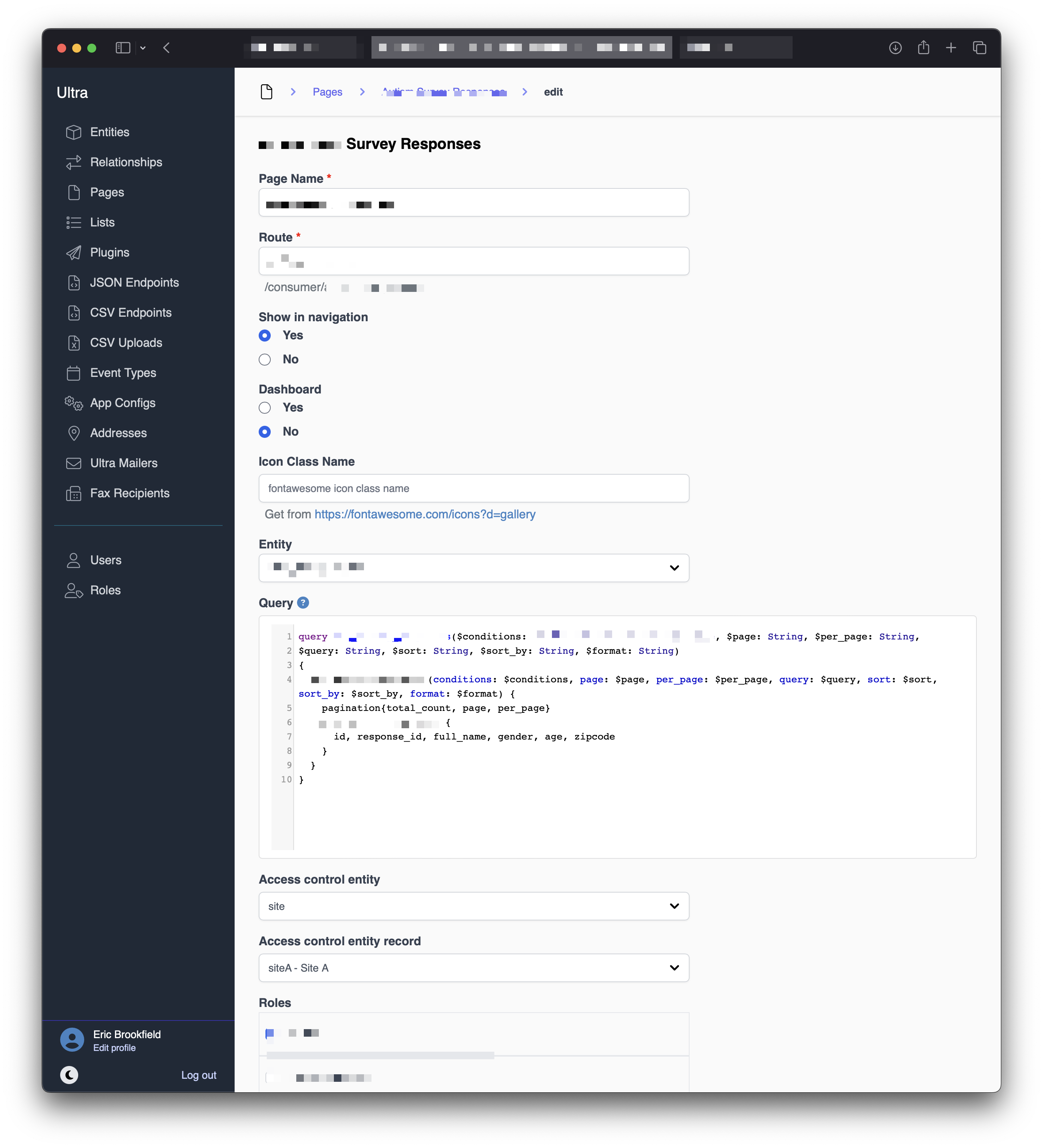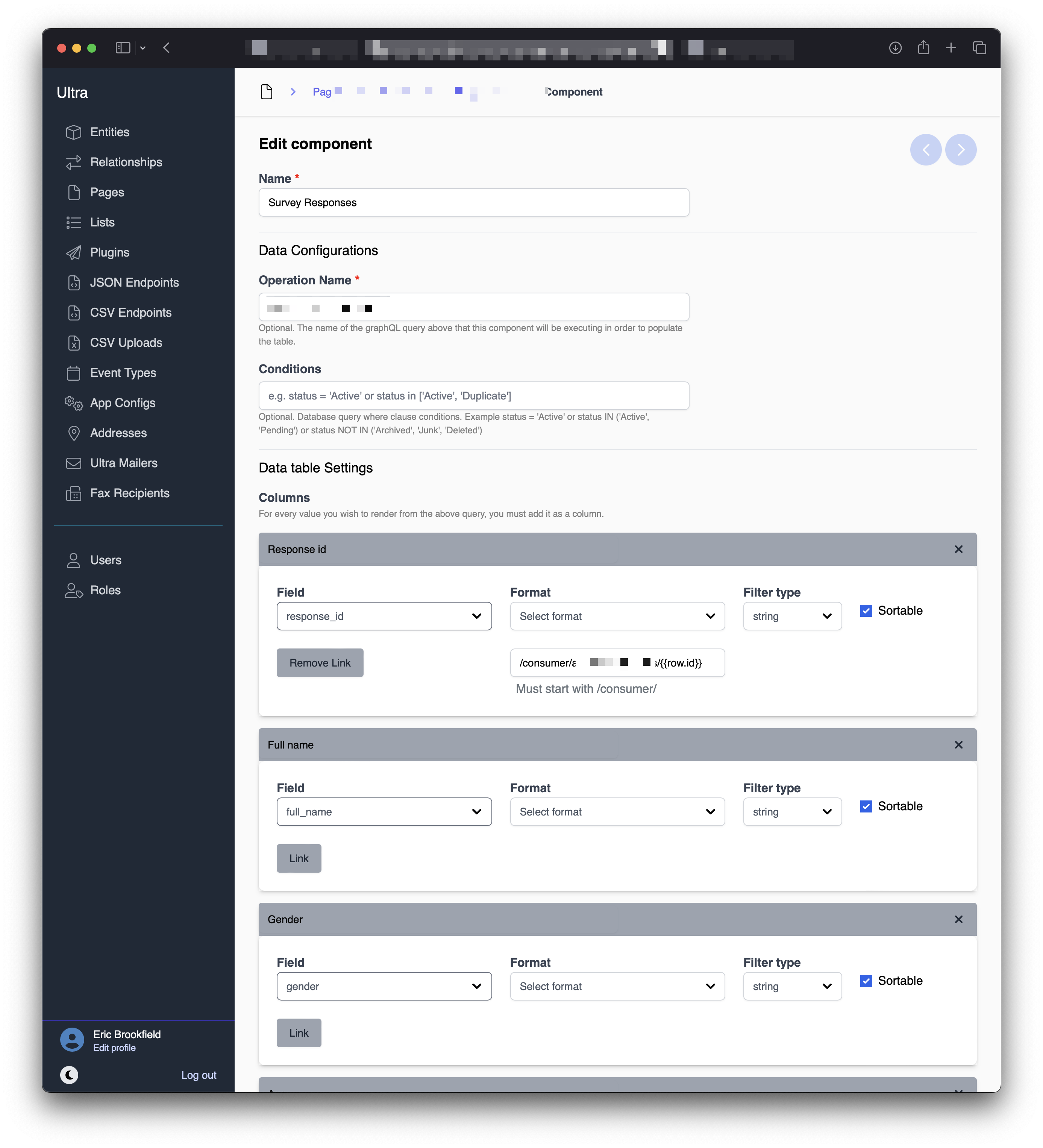In-House Survey & CRM Platform
Background
Clinical trials generate protected health information (PHI) from the beginning of the patient journey when they complete a web survey, through duration of the study as they work through numerous site visits.
Challenge
Due to the sensitive nature of this data, there was a huge degree of trepidation around pursuing third-party SaaS solutions. Both a survey tool and a customer relationship manager (CRM) application were to be built in-house.
The survey tool could potentially be administered by staff employees in charge with designing the surveys. The CRM tool needed to be able to intake the data and display it in any number of views at various macro and micro-levels of detail, with role based authentication controls (RBAC).
Execution
Survey
For Survey 1.0, I shipped Ruby on Rails on the backend and React for the browser client in about 4 months. Features included unlimited survey panels, multiple prompt types to support a wide range of prompt styles, and conditional rendering of prompts or complete panels based on the end user’s multiple choice selection.
Survey2 shipped about a year after launch, this time with developers working under me. I conducted group and one-on-one crash courses on React to a team of developers that mostly worked with traditional server-side view templating. We built an app supporting multi-tenancy, with webhooks for posting data to our legacy and future CRMs, and I designed a contemporary admin interface that is intuitive and easy to use.
CRM
The CRM build began as core Survey 2.0 was winding down. The CRM was built as a meta-platform, where every instance is a blank slate. We provided:
- A UI to shape the database as needed through virtual tables, columns, and relationships
- Pages with rich user interface components, as well as custom code blocks
- Users and roles
- Document storage systems
- Twilio integration for virtual phone numbers, voicemail, SMS and call-center configuration
- API endpoint configuration for data import
- Reporting and notification tools


The CRM allows dozens of end users to easily filter through tens of thousands of records on our busiest instance. We re-platformed one legacy system onto this platform, and have one more to do.
Tools
React, Blueprint.js and custom CSS in a Webpack-bundled environment sits in front of a Rails API backend. Tailwind was introduced along the way and gradually replaced all the custom CSS, which minimized inconsistency across components worked on by separate developers.
For the CMS build, I gave my team some time to trial Vue and Svelte before determining the front end framework. Everyone agreed the Vue developer experience was superior to what we had built with React, and so Nuxt and Vue became the front end framework, with Tailwind providing most of the CSS, although with a highly customized config file.
A Rails API still powered the backend, but we used a GraphQL implementation accessible in-app for admins to easily build data queries without having to write custom API endpoints or SQL code. We support non-destructive mutations as well, which makes for on-demand form generation.
Database is Postgres with Redis for caching and delayed jobs, all hosted on AWS.